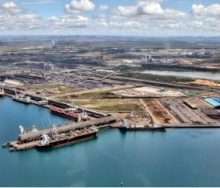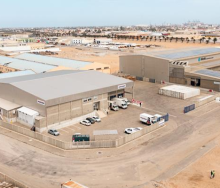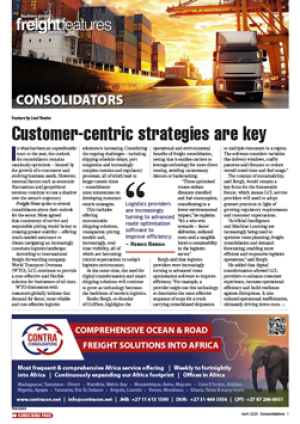The global air cargo market has begun 2025 with softening of rates following the peak season, but geopolitical risks and tariff uncertainty cannot be discounted in future predictions.
That’s according to a report published by the Baltic Exchange, which points out that the Baltic Air Freight Index (BAI) fell by -3.7% week-on-week as of January 6, reflecting the seasonal post-holiday decline in volumes, but it remains +25.9% higher year-over-year.
Despite this expected easing, the market is reported to be unusually active for January, as shippers have frontloaded inventory to avoid the impact of new US tariffs on Chinese imports, expected later this month under the incoming Trump administration.
The Red Sea shipping disruptions are also continuing to cause supply chain disruptions, increasing airfreight demand on select trade lanes, particularly for high-value goods moving from Asia to Europe.
Looking ahead, commentators believe the key issues will be tariff pressures and trade policy shifts.
The pre-tariff surge in shipments as companies seek to move goods before duties increase has created temporary bottlenecks in certain airfreight corridors, particularly for electronics, textiles, and machinery moving from China to the US.
A long-term tariff-related development could see accelerated relocation of manufacturing from China to Southeast Asia and Mexico.
This shift is already reflected in growing air cargo demand on intra-Asia and Asia-Latin America lanes, where businesses are adjusting supply chains to mitigate tariff exposure, says the BE.
And while the rerouting of cargo via the Cape of Good Hope to avoid the troubled Red Sea region is unlikely to change any time soon, if maritime security improves or carriers up their capacity, airfreight’s dominance may wane.
Cargo Facts Consulting forecasts that global air cargo traffic will grow between 4 and 5% in 2025, following an estimated 12% full-year expansion in 2024.
It has advised shippers to anticipate further volatility through Q1 2025.
“The coming months will test the resilience of global airfreight networks, as shippers, forwarders, and carriers navigate evolving challenges in 2025. As supply chain stakeholders adjust to new realities, those with flexible strategies, diversified sourcing options and robust risk mitigation plans will be best positioned to navigate the uncertainties ahead,” says the air cargo consultancy.













